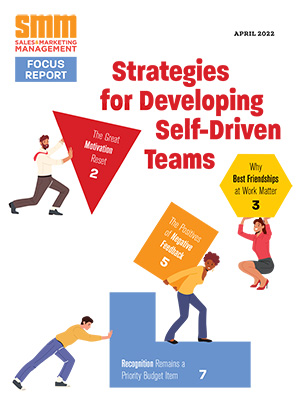Sales teams are usually viewed as the most important business units in a corporate world. But sales teams have to be smart in order to deliver great results. Pretty much every sales team relies on a customer relationship management (CRM) system to manage the sales process, but according to ISMM’s Sales Director of the Year 2015 Ian Moyse, the system itself is often misused when it comes to effectivenessand team motivation.
CRM systems “are not easy in any organization,” says Moyse, who has over 20 years of experience in sales. But the real problem lies not with the system itself, but rather in the way senior managers use it to drive the performance of their teams.
Moyse outlines two biggest mistakes related to CRM use, and proposes solutions to avoid these issues.
1. Using CRM for Bashing
“CRMs are often used by management as a bashing tool for sales,”says Moyse.
“A lot of managers use sales reports in the following way ‘The system is telling us A, B and C, therefore you’re not doing enough for X, Y and Z’. Naturally, salespeople react and tick a box, so that a report doesn’t hang over their head, thinking ‘let me throw some things in, so that when the report comes out tomorrow, you don’t bash me over the head with what it’s telling you.’’’
Moyse believes this is not the right behavior and approach necessary for effective sales. It can backfire too easily, putting staff on the defensive. If sales teams start tweaking data just to avoid being reprimanded, the business not only ends up with disengaged staff, but it loses insight into what’s truly going on.
What Moyse suggests instead is a smart use of the system that makes real difference: “Use the carrots rather than the sticks. A focus on behavior will deliver the right results,” he says.
Moyse encourages companies to use CRM reporting to make the life of their sales reps easier. For example by helping them prioritize their daily activities, reminding them of opportunities that might have fallen through the cracks and rewarding the right behaviour, not just the results. This way the reps will improve their performance while being driven by reward, rather than by fear of punishment.
2. Treating Findings as Black and White
Many managers look at sales reports and take the information as black and white (for example 10 percent increase in sales is good, 10 percent decrease is bad), but interpretation is key in order for sales teams to fully make use of the information and implement changes.
It’s not enough to say what happened, it’s important to delve deeper and look for the story behind the data – the why. In reality, findings are rarely cut and dried, and vital business insights are found in the investigation of the figures.
Moyse, who has run sales teams at Workbooks.com and Rackspace, says the best way to uncover the why behind the findings is by having a hands-on approach: “When you’re part of the team and you understand at street level what’s really going on, you can deliver far greater value to the salespeople than if you distance yourself from them. I still run deals myself or go and look for new leads, that way I can help engage the sales people, not wait for them to do it all.”
CRM data holds crucial nuggets of insight into what’s going well in the sales process, and what’s not. Unlocking these insights by interpreting the reports, and offering sales teams opportunities to improve, without fear of punishment, is the key to capitalising on this valuable information.
Martin Zeman is managing director of Data Driven Era, a business intelligence consultancy that helps leaders of sales organizations hit their sales targets by helping them utilize their data smarter and make better informed and timely decisions.


